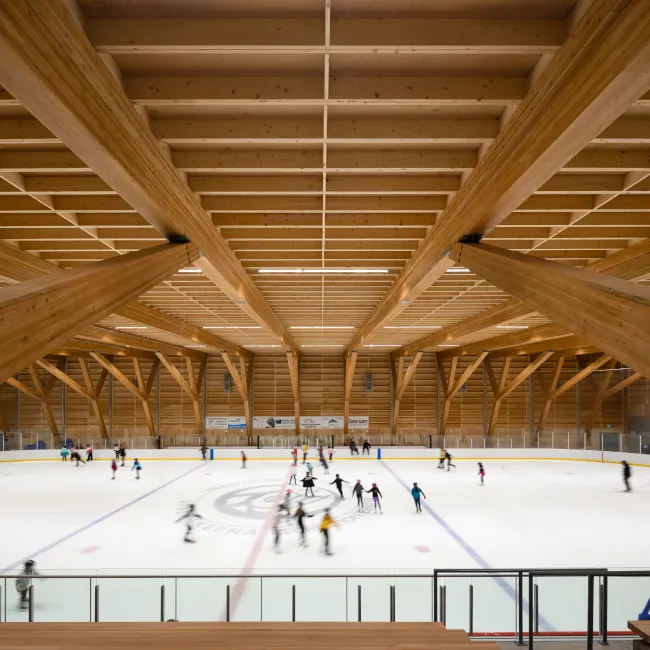
Upper Skeena Recreation Centre in Hazelton BC, Canada

published in sb 1/2021
The Upper Skeena Recreation Centre houses an NHL-sized ice rink with seating for 500 spectators, a large gymnasium and fitness centre, changing rooms, and a community room with views into both the rink and gym for social events and gatherings. Hemsworth Architecture favoured a construction of locally harvested and produced wood.

photo: Ema Peter
